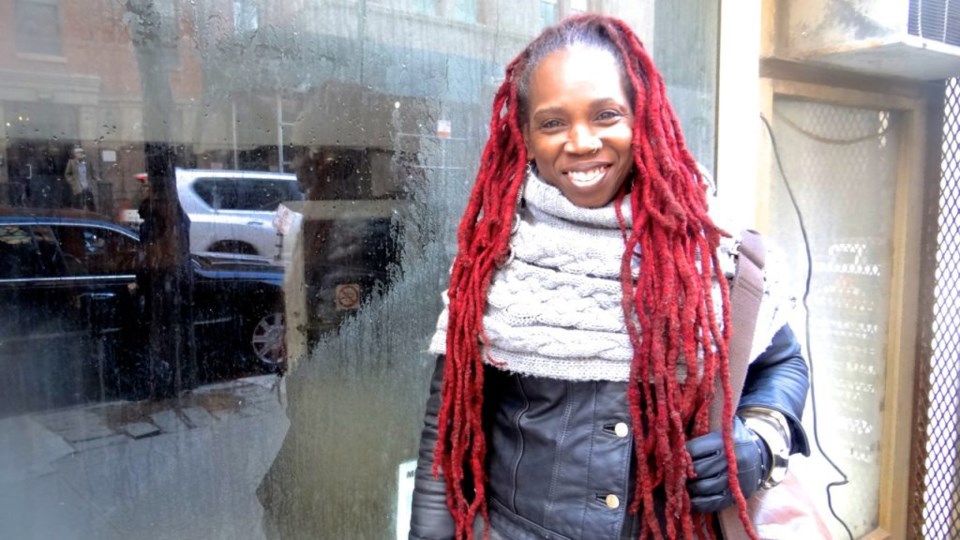
In the fall of 2004, on the cusp of gentrification's most recent arrival to Brooklyn, Joy Chatel—known to many in the community as "Mama Joy"—received a pink slip on her door notifying her of the City's intention to confiscate her property "for the betterment of the community."
To Mama Joy's surprise and dismay, she, along with several other neighbors who lived along Duffield Street in downtown Brooklyn, suddenly had become the recipients of a legal action known as eminent domain.
The area where Mama Joy lived in downtown Brooklyn off of Fulton Mall was fast developing, fast growing, and the City had plans to build an underground parking lot.
The only problem was, like several of the homes on the block, Mama Joy's home at 227 Duffield Street had a history that made it special: During the early 1800s, it was one of the safe haven stops for slaves moving through the underground railroad to freedom, and further, the former owners of Mama Joy's home were believed to be well-known and respected abolitionists.
"Her [deceased] husband, who owned the property [with his first wife] had always told her that there was a strong possibility that abolitionists used to live in the house because his first wife's family would speak of it often," said Shawne Lee, Mama Joy's daughter.
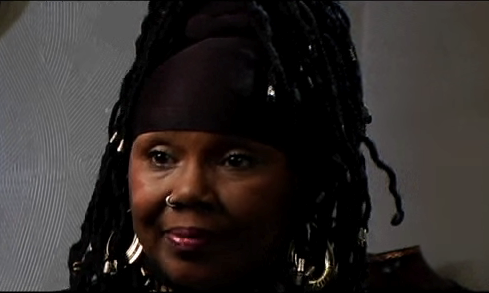
And there was other evidence, said Lee, such as an old map of the area obtained from the Brooklyn Historical society pointing to the 226 Duffield Street location as an underground railroad stop; and small artifacts uncovered in the basement, including a sealed archway recognizable to any American historian as a hideaway and tunnel for runaway slaves.
So Mama Joy set out to fight the city. Her plan was to get proof of the home's abolitionist past, as well as rally public support and then ultimately convince the city to allow her to turn the location into a museum and heritage center.
She met with an archeologist, Dr. Cheryl LaRoche, author of Free Black Communities and the Underground Railroad: The Geography of Resistance. According to Lee, Dr. LaRoche came to see the home and stated unequivocally that there was "definite reason to believe this was an abolitionist's home."
Mama Joy also learned that her area was actually a hub for freedom-seeking slaves. In fact two prominent churches in the area—Bridge Street Church and Plymouth Church—were well known for their pro-abolition efforts, providing asylum and resources to newly escaped slaves.
Then Mama Joy began to travel across the five boroughs and to Rhode Island and Canada, seeking support of researchers in antebellum and postbellum history. She met James Driscoll at the Queens Historical Society, and with his help, learned that the abolitionists that did in fact live in her home were Thomas and Harriet Lee Truesdell.
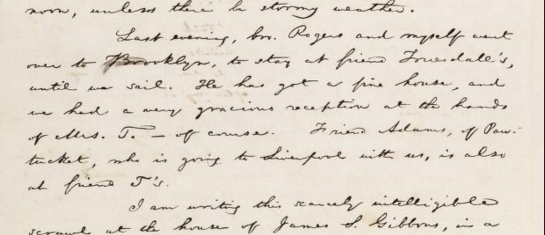
The Truesdells owned a cotton company (and paid their labor workers); Harriet was the secretary and treasurer of a woman's anti-slavery movement. And apparently, the famous abolitionist, William Lloyd Garrison, would stay at their house when he was in town. This they learned from a letter Garrison wrote to his wife where he mentions the Truesdells (2nd page, 2nd par.). In the letter, Garrison stated he was happy he was able to stay with them and what a lovely couple they were.
Mama Joy presented this and other mounting evidence with each court visit. AKRF, the developers the City hired for the project, spent over $500,000 and hired dozens of different professionals to discredit what she was saying, said Lee. But to no avail.
In the spring of 2007, with the help of Families United for Racial and Economic Equality (FUREE), Mama Joy won against the city and reversed eminent domain. A second victory came later that year in September, when Mama Joy helped secure the co-naming of the little corridor of Duffield Street between Fulton St and Willoughby Ave, "Abolitionist Place."
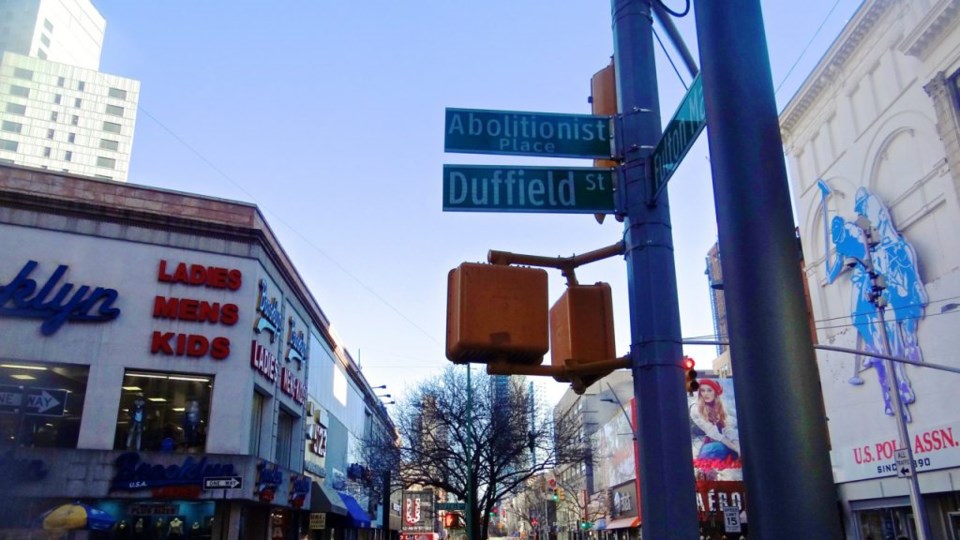 Mama Joy then got to work, hosting tours inside the home to international and local visitors. The home also became a regular meeting place for arts performances and community organizing. Mama Joy's plans were to raise enough money to make it an official museum. However, in 2010, Mama Joy shut down the center temporarily, behind legal fees incurred from a deed theft case and a code violation. And then, on January 7, 2014, Mama Joy passed away suddenly from interstitial pneumonia (lung disease), sending shockwaves throughout the community.
Mama Joy then got to work, hosting tours inside the home to international and local visitors. The home also became a regular meeting place for arts performances and community organizing. Mama Joy's plans were to raise enough money to make it an official museum. However, in 2010, Mama Joy shut down the center temporarily, behind legal fees incurred from a deed theft case and a code violation. And then, on January 7, 2014, Mama Joy passed away suddenly from interstitial pneumonia (lung disease), sending shockwaves throughout the community.
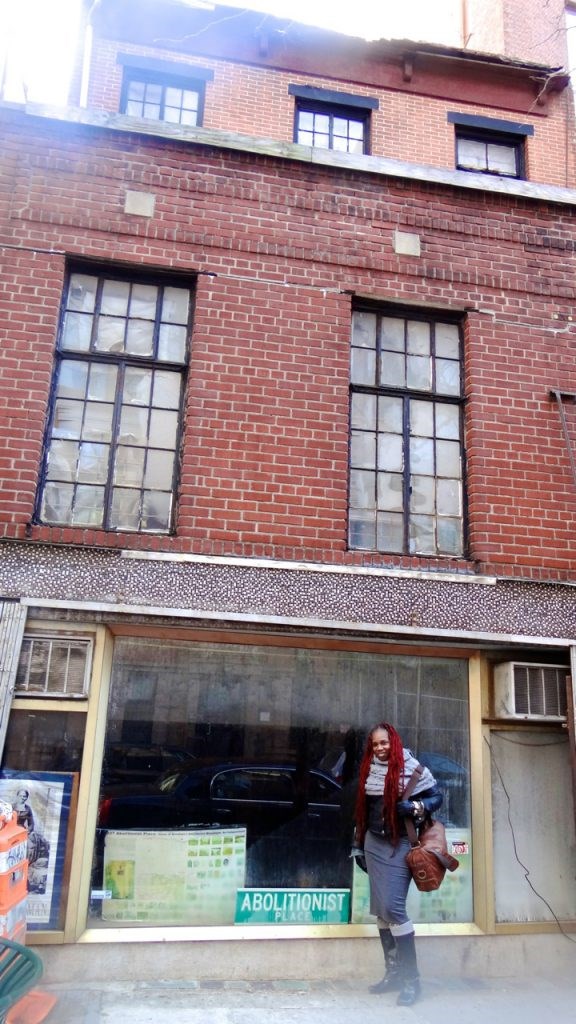
"My mom was a warrior, no joke," said Lee. "She was a community activist, PTA president; she used to coach children's baseball.
"When we were growing up, we would have small miracles happen, mysterious things... things I just thought happened to people all the time. She would always get into serious situations and find her way out of it and land on top. So when she fell ill, I just thought she would get out of it But it didn't happen."
So now, Lee is overseeing 227 Abolitionist Place and carrying her mother's torch:
"I'm being approached constantly by developers, and I can easily walk away as a multi millionaire," said Lee. "But that's not what I want. What I want is what my mother wanted and that's to turn part of this home into a museum heritage center."
On April 17, 2016, Friends of 227 Abolitionist Place will present Closer To Our Dream Performance Gala, a fundraiser to continue Mama Joy Chatel's vision of turning her historic home into a museum and heritage center. Proceeds from the event will go towards legal expenses and developing plans of 227 Abolitionist Place.
For more information on 227 Abolitionist Place and or to purchase tickets for the fundraiser gala, go here.



